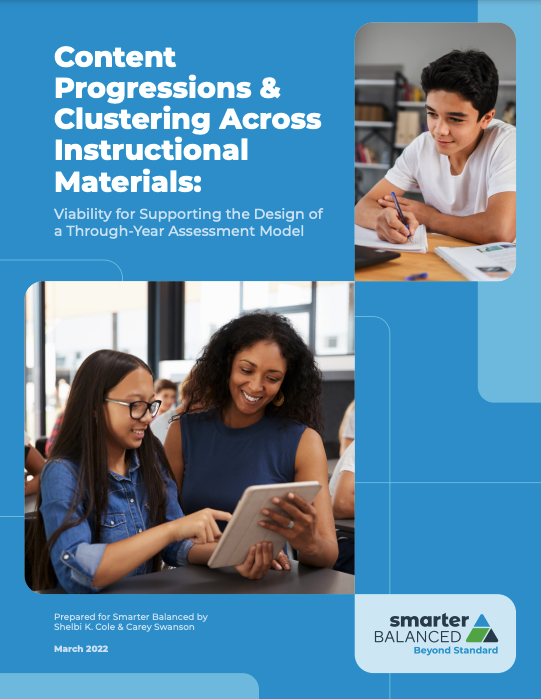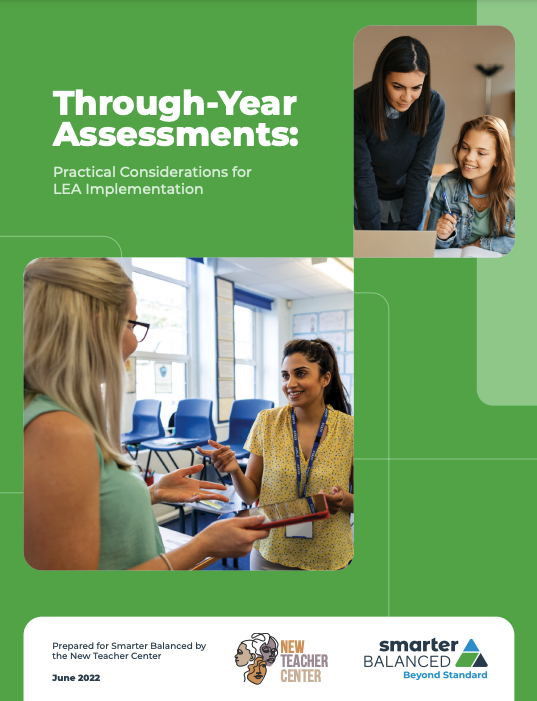New From Smarter Balanced: Findings from Two Through-Year Assessments Papers


Smarter Balanced is pleased to announce the publication of two papers that explore the viability and use of through-year assessment models. In recent years, several states have begun to explore or pilot different through-year assessments to serve as replacements to the traditional end-of-year summative assessments.
The information offered through “Content Progressions & Clustering Across Instructional Materials: Viability for Supporting the Design of a Through-Year Assessment Model” and “Through-Year Assessments: Practical Considerations for LEA Implementation” is meant to help education leaders consider the shifts and supports needed with through-year assessments.
Content Progressions & Clustering Across Instructional Materials: Viability for Supporting the Design of a Through-Year Assessment Model
Prepared for Smarter Balanced by Shelbi K. Cole and Carey Swanson
This paper examines existing through-year assessment models and provides analysis of the most used curriculum within the context of how well they would work with through-year assessment. This piece makes strong recommendations for strengthening the interim and formative resources available to educators, piloting innovative and alternative models, developing pathways for authentic integration with the interim system, and partnering with key curriculum providers and district users.
Through-Year Assessments: Practical Considerations For LEA Implementation
Prepared for Smarter Balanced by the New Teacher Center
As State Educational Agencies (SEAs) weigh the advantages and disadvantages of embracing this emergent assessment system, it is important to consider the impact such a decision would have on Local Educational Agencies (LEAs). This paper explores the practical considerations for LEAs managing the implementation of a statewide through-year model with instructional priorities. Key implications include defining their theory of action for assessment; ensuring alignment and coherence between curriculum, instruction, and assessment; developing a plan to support teachers and students; providing information about assessments with families and other key stakeholders; and managing the administrative systems of testing and assessments.
For more information, access the papers here.
